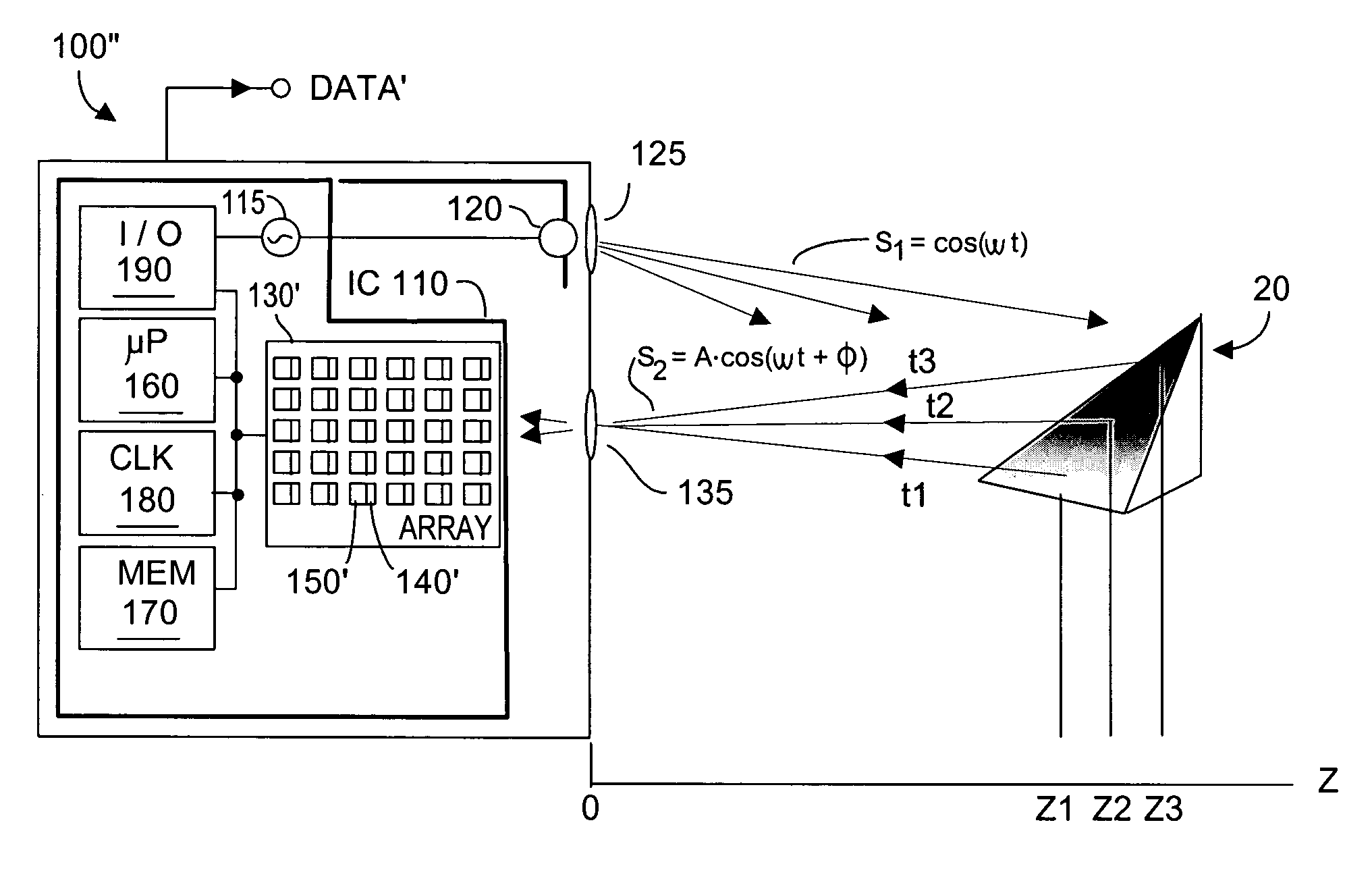Method and system to correct motion blur and reduce signal transients in time-of-flight sensor systems
a sensor system and motion blur technology, applied in distance measurement, surveying and navigation, instruments, etc., can solve problems such as yielding a depth image with errors
- Summary
- Abstract
- Description
- Claims
- Application Information
AI Technical Summary
Benefits of technology
Problems solved by technology
Method used
Image
Examples
Embodiment Construction
[0033]FIG. 3A depicts a system 100″ with improved de-blurring performance according to the present invention. Unless otherwise stated, reference numerals in FIG. 3A may be understood to refer to elements identical to what has been described with respect to other figures herein. It is thus understood that the various embodiments described below may be fabricated using CMOS technology upon a common integrated circuit substrate.
[0034] In FIG. 3A, pixel detector array 130′ in system 100″ differs from prior art arrays 130 in FIGS. 1 and 2A by including structures that reduce time over which TOF data is collected, thus reducing motion blur according to the present invention. As a result, output DATA′ will be substantially free of motion blur, providing relative motion between system 100′ and target object or scene 20 is not excessively rapid.
[0035] As noted, it usually is advantageous to obtain multiple data measurements using a TOF system 100′. Thus, microprocessor 160 may program via ...
PUM
 Login to View More
Login to View More Abstract
Description
Claims
Application Information
 Login to View More
Login to View More - R&D
- Intellectual Property
- Life Sciences
- Materials
- Tech Scout
- Unparalleled Data Quality
- Higher Quality Content
- 60% Fewer Hallucinations
Browse by: Latest US Patents, China's latest patents, Technical Efficacy Thesaurus, Application Domain, Technology Topic, Popular Technical Reports.
© 2025 PatSnap. All rights reserved.Legal|Privacy policy|Modern Slavery Act Transparency Statement|Sitemap|About US| Contact US: help@patsnap.com



